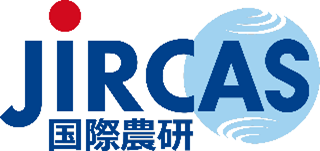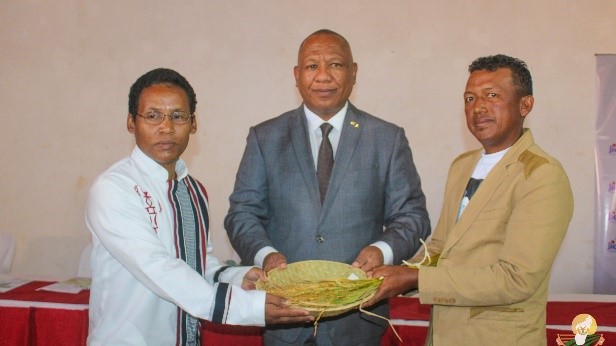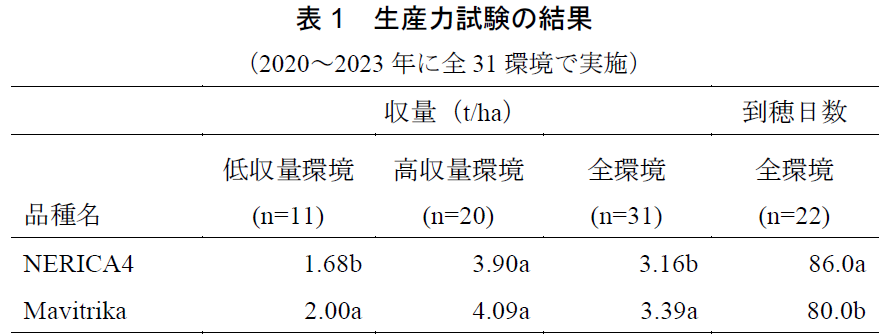New upland rice variety released in Madagascar
— Mavitrika, an upland rice variety that shows high productivity under nutrient-deficient conditions―
New upland rice variety released in Madagascar
— Mavitrika, an upland rice variety that shows high productivity under nutrient-deficient conditions―
|
Main Points
|
Overview
JIRCAS, in collaboration with the National Center of Applied Research for Rural Development (FOFIFA) of Madagascar and the Africa Rice Center (AfricaRice), has developed a new upland rice variety. The new variety was registered in the Republic of Madagascar on March 21, 2024, and was announced in the presence of Madagascar Prime Minister Christian Ntsay and the ministers of Agriculture & Livestock and of Higher Education & Scientific Research (Photos 1 and 2). The new variety has garnered significant attention from farmers, government agencies in charge of dissemination, and local media outlets, including newspapers and TV stations, as it contributes to improving productivity of rice, the staple food of Madagascar.
The new variety is called Mavitrika (Photo 3), which means “vibrant” in Malagasy. The name was proposed by FOFIFA researchers based on the new variety's characteristics, i.e., it grows (matures) quickly and grows well even in low-productivity environments.
The variety was selected and bred from a cross between DJ123, an aus-type rice variety (a group of varieties grown in India and Bangladesh in the first half of the rainy season) that has excellent productivity in low-fertility environments, and NERICA4, a major upland rice variety in sub-Saharan Africa. Productivity trials were conducted in 31 cultivation sites in Madagascar from 2020 to 2023, and it was demonstrated that the heading period (the number of days from sowing to flowering) is 6 days shorter on average than that of NERICA4, the main upland rice variety in the country, and that the yield is significantly higher than NERICA4 by 19% in low-yielding environments (Table 1). Since "early maturity" and "high yield" are traits that farmers value when selecting rice varieties, Mavitrika's growth characteristics make it particularly suitable for low-yield regions.
Furthermore, taste tests and nutrient analysis conducted with farmers confirmed that Mavitrika is as palatable as NERICA4, and that it can contribute to improving micronutrient deficiencies, with a zinc content of 29 ppm in white rice, 23% higher than NERICA4 when grown in the target area. Based on these characteristics, the Seed Management Committee of the Ministry of Agriculture and Livestock of Madagascar determined that this variety could be popularized among rice farmers in Madagascar, which led to the registration of this variety.
In the future, JIRCAS will work with FOFIFA and the Ministry of Agriculture and Livestock to produce certified seeds of the new variety and disseminate it to farmers. Madagascar is a major rice-growing country, with a per capita rice consumption more than twice that of Japan and more than half of the population engaged in rice cultivation. However, the productivity of rice, the nation's staple food and main industry, has stagnated to this day, and there is a serious lack of zinc and other micronutrients. It is hoped that the spread of this new rice variety will contribute to stable rice production in Madagascar, as well as to improved nutrition and poverty reduction in the country.
Related Information
This research was supported by the Grants-in-Aid projects, "Development of sustainable technologies to increase agricultural productivity and improve food security in Africa, "Development of breeding materials and basic breeding technologies for highly productive crops adaptable to adverse environments," and "Development of sustainable rice cultivation and food production system in Africa.”
For inquiries
JIRCAS President KOYAMA Osamu
Program Director: FUJITA Yasunari (Food Program)
Researcher-in-charge: TSUJIMOTO Yasuhiro (Project Leader, Crop, Livestock and Environment Division)
Press Coordinator: OMORI Keisuke (Head, Information and Public Relations Office)
Press e-mail:koho-jircas@ml.affrc.go.jp
Reference materials
Photo 2: Group photo at the ceremony introducing the new variety
From left: FOFIFA research staff, JIRCAS research staff (now at the University of Bonn), farmer representative, Prime Minister Ntsay, Minister Ratohiarijaona Rakotoarisolo Suzelin of the Ministry of Agriculture & Livestock, Minister Razafiharison Andriamanantena of the Ministry of Higher Education & Scientific Research, the Deputy Director General of the Japan International Cooperation Agency - Madagascar Office, the Director General of FOFIFA, and others
Table 1: Results of productivity tests
- Sites with average yields of less than 2 t/ha for all varieties tested were defined as low-yielding environments, and those with yields of 2 t/ha or more were defined as high-yielding environments.
- Yields were expressed in terms of white rice yield at 14% moisture content.
- Means with different alphabets are significantly different at the 5% level.






